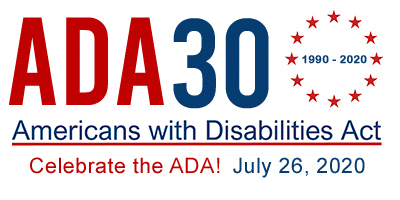 The Department of Justice published revised regulations for Titles II and III of the Americans with Disabilities Act in the Federal Register on September 15, 2010. These regulations updated enforceable accessibility standards and became known as the 2010 ADA Standards for Accessible Design.
The Department of Justice published revised regulations for Titles II and III of the Americans with Disabilities Act in the Federal Register on September 15, 2010. These regulations updated enforceable accessibility standards and became known as the 2010 ADA Standards for Accessible Design.
The 2010 Standards represent minimum requirements–both scoping and technical–for newly designed and constructed or altered State and local government facilities, public accommodations, and commercial facilities to be readily accessible to and usable by individuals with disabilities.
Access standards exist for the built environment and include, but are not limited to, the following areas:
- Commercial facilities
- Assembly areas
- Dormitory housing
- Medical facilities
- Rental housing
- Detention and correctional facilities
- Social service centers
- Recreation facilities
To accommodate people using mobility devices, new or structurally renovated portions of a building must have enough unobstructed space to travel and turn. Requirements are also in place for:
- Disability parking
- Accessible path of travel
- Door hardware and resistance
- Maximum ramp slope and reach ranges
- Grab-bar location
- Accessible toilet height
- Accessible site lines and more
For people with vision or hearing disabilities, the regulations also require installation of audible and visual alarm systems. Accessible signage is also required for room numbers, restrooms, exits, etc. These requirements include raised lettering, Braille and color contrast.
Where audible communication is “integral to the use of the space,” assistive listening devices must be provided. (2010 ADA Standards for Accessible Design)
Thanks to the ADA, people with disabilities are able to enjoy access to buildings and places that were previously inaccessible to them, improving their quality of life and levels of independence.
Celebrating 30 Years of the ADA
The U.S. Access Board will celebrate the ADA’s 30th anniversary with a virtual public meeting on July 29 from 12:30 to 2:00pm (CT).
The event will feature a discussion of the ADA and its achievements with guest speakers and Access Board members.
It will start off with a documentary that provides a vivid picture of the world before the ADA, including widespread discrimination of people with disabilities and early achievements of the disability rights movement.
Then, there will be a panel discussion on the accomplishments of the ADA and the important role disability rights advocates played in passage of the ADA and its implementation as a landmark civil rights law.
The event will conclude with a presentation on how the ADA has spurred architecture and design to be more inclusive of everyone. The presentation will also review new frontiers in accessibility and work that lies ahead to maintain the promises of the ADA.
Visit the Access Board’s website for login information.